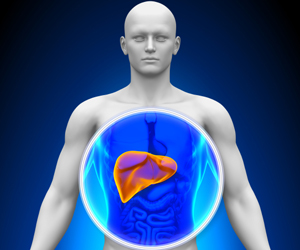Experts apprehend the air pollution levels may not become any the safer in time for Olympics next year.
China might be going all out to ensure that the air over Beijing is clean enough to host the Olympics later this year. But prospects don’t seem all that bright.
When last August, Jon Kolb, a member of the Canadian Olympic Committee an Olympic official checked out, the news was rather depressing.
His measurement of fine particles pollution, or PM 10, reached 200, roughly four times above the level deemed safe by the World Health Organization.
He also said Olympic athletes were worried about ozone, which could inflame the respiratory tract and make it more difficult to breathe. The Beijing’s own monitoring system does not even measure ozone, nor does it keep a tab on the finer particulates known as PM 2.5.
Beijing has long ranked as one of the world’s most polluted cities. To win the Games, Beijing promised a “Green Olympics” and undertook environmental initiatives now considered models for the rest of the country.
But greening Beijing has not meant slowing it down. Officials also have encouraged an astonishing urbanization boom that has made environmental gains seem modest, if not illusory, notes Jim Yardley, writing in the New York Times.
Beijing is like an athlete trying to get into shape by walking on a treadmill yet eating double cheeseburgers at the same time, he says. For while polluting factories have been moved or closed, auto emissions are rising as the city adds up to 1,200 new cars and trucks every day.
Dirty, coal-burning furnaces have been replaced, lowering the city’s sulfur dioxide emissions. But fine-particle pollution has been exacerbated by a staggering citywide construction binge that shows no signs of letting up.
But Beijing’s Olympic bid also intensified a stunning urban boom. Since 2000, Beijing’s gross domestic product has jumped 144 percent, according to Beijing Olympic officials. New office buildings and apartment towers seem to rise every week. More than 1.7 billion square feet of new construction has been started since 2002, most of it unrelated to the Olympics.
The emerging cityscape is often dazzling, but also energy intensive and polluting. Beijing now requires factories and power plants to burn cleaner, low-sulfur coal, but it had also hoped to reduce overall coal consumption in the years before the Olympics.
Instead, the city’s coal consumption peaked at 30 million tons last year. Beijing also has only one office tower that qualifies under international and national energy efficiency standards as a green building. Construction, meanwhile, is expected to continue at a rapid pace.
“I think there will be another 20 to 30 years of urbanization,” said Wu Weijia, a professor at Tsinghua University’s Institute of Urban Studies. “The scale of construction in Beijing will not slow down after the Olympics.”
Meanwhile, an explosion of car ownership has wrought gridlocked traffic and a halo of auto fumes. Beijing now has more than three million vehicles and is adding more than 400,000 new cars and trucks each year. The city’s reliance on cars and trucks leaves its air with few reprieves. As in other Chinese cities, heavy trucks can only enter at night. Diesel exhaust is so severe that Beijing’s levels of PM 2.5, a tiny particulate deemed potentially harmful to health, is highest between midnight and 3 a.m., according to one survey.
China’s unsolved riddle is how to reconcile fast economic growth with environmental protection.
But Beijing’s Olympic deadline means the city needs an immediate answer. The ruling Communist Party envisions the Games as a public relations showcase and is leaving no detail untended.
“We are determined to ensure that the air conditions meet the necessary standards in August 2008,” Liu Qi, president of the Beijing Organizing Committee for the Games, told the International Olympic Committee’s executive board this month.
Officials have discussed shutting down factories and restricting traffic during the Games. And scientists are cross-breeding chrysanthemums to ensure that flowers bloom in August.
Beijing residents overwhelmingly support the Games and take for granted that officials will do what is necessary to ensure clean air.
Last August, the city removed a million cars from roads during a four-day test intended to gauge pollution and traffic. But what such emergency measures will achieve is also a moot point.
Anyway the apprehension is that respiratory problems could impede athletic performance and prevent records from being broken.
But then for the city’s estimated 12 million residents, pollution is an inescapable health and quality-of-life issue.
One 2003 study warned that air pollution could be a major contributor to premature deaths related to chronic pulmonary disease, especially in the winter.
Another study showed that visits to hospital emergency rooms rose on days with higher pollution levels.
Pollution is expected to remain a major, long-term challenge as Beijing’s population may eventually exceed 20 million people.
There is also a geographical angle to it all. Surrounded by mountains on three sides, Beijing depends on strong winds to disperse pollution. Yet winds also draw pollution into the city.
Source-Medindia
GPL/GA







